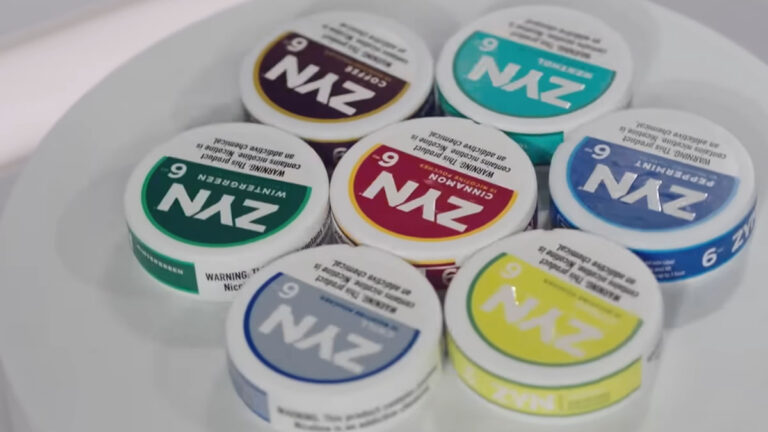If you're trying to quit smoking, you may have considered various nicotine replacement therapy (NRT) options, such as patches or gum, to help reduce cravings. However, a newer product on the market, nicotine pouches, has been gaining popularity as an alternative to smoking and vaping. But are these tobacco-free sachets really an effective tool for kicking the habit? Let's take a closer look.
What Are Nicotine Pouches?
Nicotine pouches, first introduced in the UK in 2019, are small, tobacco-free sachets containing a powder made up of nicotine, flavorings, and other additives. They are placed between the upper lip and gum, releasing nicotine without the harmful effects of cigarette smoke or vape aerosol. Common brands in the UK include ZYN, Velo, and Nordic Spirit.
Despite their similarities to snus, a tobacco-containing pouch product banned in the UK since 1992, nicotine pouches are marketed as a cleaner and more convenient way to consume nicotine. However, unlike traditional NRTs, nicotine pouches have not been approved for use as a smoking cessation aid.
The Difference Between Nicotine Pouches and NRT
NRTs, such as patches, lozenges, and chewing gum, are available over-the-counter in the UK and are produced by well-known brands like Nicorette and Niquitin. These products have undergone extensive testing and are regulated by the Medicines and Healthcare products Regulatory Agency (MHRA) to ensure their safety and effectiveness.
In contrast, nicotine pouches are classified as consumer products and are governed by the General Product Safety Regulations, which are less stringent than the regulations for medicinal products. This means that companies producing nicotine pouches do not need to apply for a marketing license or prove their safety and efficacy, as is required for NRTs.
The Risks of Nicotine Pouches
While nicotine pouches are often promoted as a healthier alternative to smoking, they are not without risks. Nicotine itself can be harmful, even when consumed without tobacco. Common side effects of nicotine pouch use include nausea, vomiting, headaches, and heart palpitations. Nicotine causes the body to release chemicals like adrenaline and noradrenaline, which can raise heart rate and blood pressure and increase the heart's need for oxygen.
Moreover, nicotine pouches can contain high levels of nicotine, sometimes even higher than cigarettes and NRTs. This is particularly concerning for young people, as animal studies suggest that nicotine use during teenage years can lead to long-term changes in brain development and behavior, as well as an increased likelihood of using other drugs and experiencing mood problems.
Dental health professionals have also expressed concerns about the potential oral health effects of nicotine pouches. A recent review found that oral side effects include dry mouth, sore mouth, blisters on the gums, and sometimes changes in the gum area where the pouches were placed. These side effects are similar to those of oral NRT, but since nicotine pouches may be used for longer periods, the risk of these side effects could be higher.
The Allure of Nicotine Pouches
Despite the potential risks, nicotine pouches have become increasingly popular, particularly among young people. This is due in part to the heavy marketing of these products on social media, where influencers are sponsored to promote them as a clean, discreet, and convenient way to consume nicotine. The wide range of flavors, from cinnamon to citrus, also appeals to younger consumers.
Another factor contributing to the popularity of nicotine pouches is their accessibility. Unlike NRTs, which are only available from pharmacies, nicotine pouches can be purchased from supermarkets and shops for as little as £5 per box. Furthermore, there is currently no age restriction on buying nicotine pouches, making them easily accessible to minors.
The Future of Nicotine Pouch Regulation
Concerns about the potential risks of nicotine pouches and their targeting of young people have led some countries, such as Belgium and the Netherlands, to ban these products. In the UK, the new Tobacco and Vapes bill aims to regulate the use of nicotine pouches by restricting their sale to individuals aged 18 and older, banning advertising, and regulating their content and branding.
While these measures may help curb the use of nicotine pouches among minors and non-smokers, current smokers looking for a product to help them quit may be better off opting for regulated NRTs. Although NRTs may not offer the same variety of flavors as nicotine pouches, they have been proven safe and effective for smoking cessation.
Conclusion
Nicotine pouches, while marketed as a cleaner and more convenient alternative to smoking, may not be the best choice for those trying to quit. Unlike NRTs, nicotine pouches are not regulated as stringently and have not been approved for use as a smoking cessation aid. Moreover, the high nicotine content and potential side effects of these products, particularly among young people, raise concerns about their safety.
As the UK moves towards regulating nicotine pouches, it is essential for smokers looking to quit to consider the proven benefits of NRTs and to consult with healthcare professionals to determine the most appropriate cessation method for their individual needs. By prioritizing evidence-based approaches to smoking cessation, we can help more people successfully kick the habit and improve their overall health and well-being.


